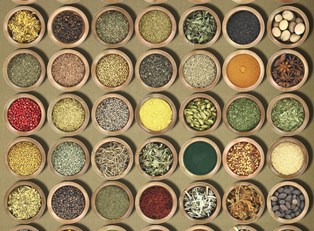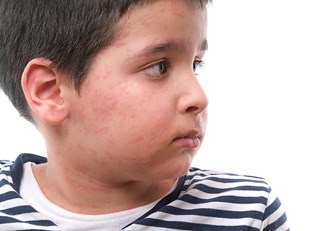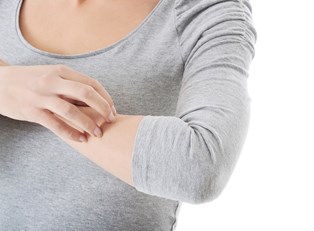Urticaria is another name for hives, a condition that affects your skin and results in red, itchy welts. Sometimes urticaria is caused by an allergic reaction, but other times it is just a result of certain triggers that cause your skin cells to release the chemical histamine into your blood stream. There are different types of urticaria depending on what triggers your reaction.
- Chronic urticaria
Most cases of urticaria are classified as acute. This means that the hives will clear up within six weeks. Urticaria becomes chronic when the welts on your skin last longer than six weeks or recur randomly for months or years. The visual symptoms of chronic and acute urticaria are the same; the only difference is that chronic urticaria is difficult to treat since it seems to come and go for no apparent reason at all. Chronic urticaria can occur in both genders and all ages, but women ages 20 to 40 tend to be at a higher risk for developing the condition. - Cold urticaria
If your skin reaction is linked to cold, then it is defined as cold urticaria. Cold urticaria can vary in severity from individual to individual. Some have minor reactions while others’ are much more severe. If you have cold urticaria and swim in cold water, it could result in a systemic reaction, meaning it affects your entire body. This could be very dangerous since it leads to very low blood pressure, fainting, shock, and even death. This type of urticaria generally occurs in young adults, and it usually doesn’t last for more than a few years. - Urticaria pigmentosa
Mastocytosis is a disorder that results in abnormal accumulations of mast cells in the skin. Urticaria pigmentosa is a localized version of this condition, since it occurs in areas where there are too many mast cells. This form of urticaria is most common in children, though it can also occur in adults as well. The main sign of urticaria pigmentosa is brownish patches on the skin. These patches become easily inflamed when rubbed or scratched, which can result in hive-like bumps or fluid-filled blisters. Other symptoms include flushed face, diarrhea, fainting, headache, and rapid heartbeat. Urticaria pigmentosa will usually correct itself by the time a child reaches puberty. - Solar urticaria
This type of urticaria is very rare. It only accounts for less than 1% of all documented urticaria cases. It was first documented in Japan in 1916, and there have only been about 100 more cases of the disease since that time. It is characterized by welt formation accompanied by stinging and burning after being exposed to natural sunlight or an artificial light meant to mimic the sun, such as a tanning bed. Solar urticaria is generally limited to exposed areas of the skin, though it can affect skin that is covered by thin clothing. The welts will usually disappear between minutes and hours after the sun exposure, though it can be difficult to deal with since it has such a sudden and dramatic onset.



